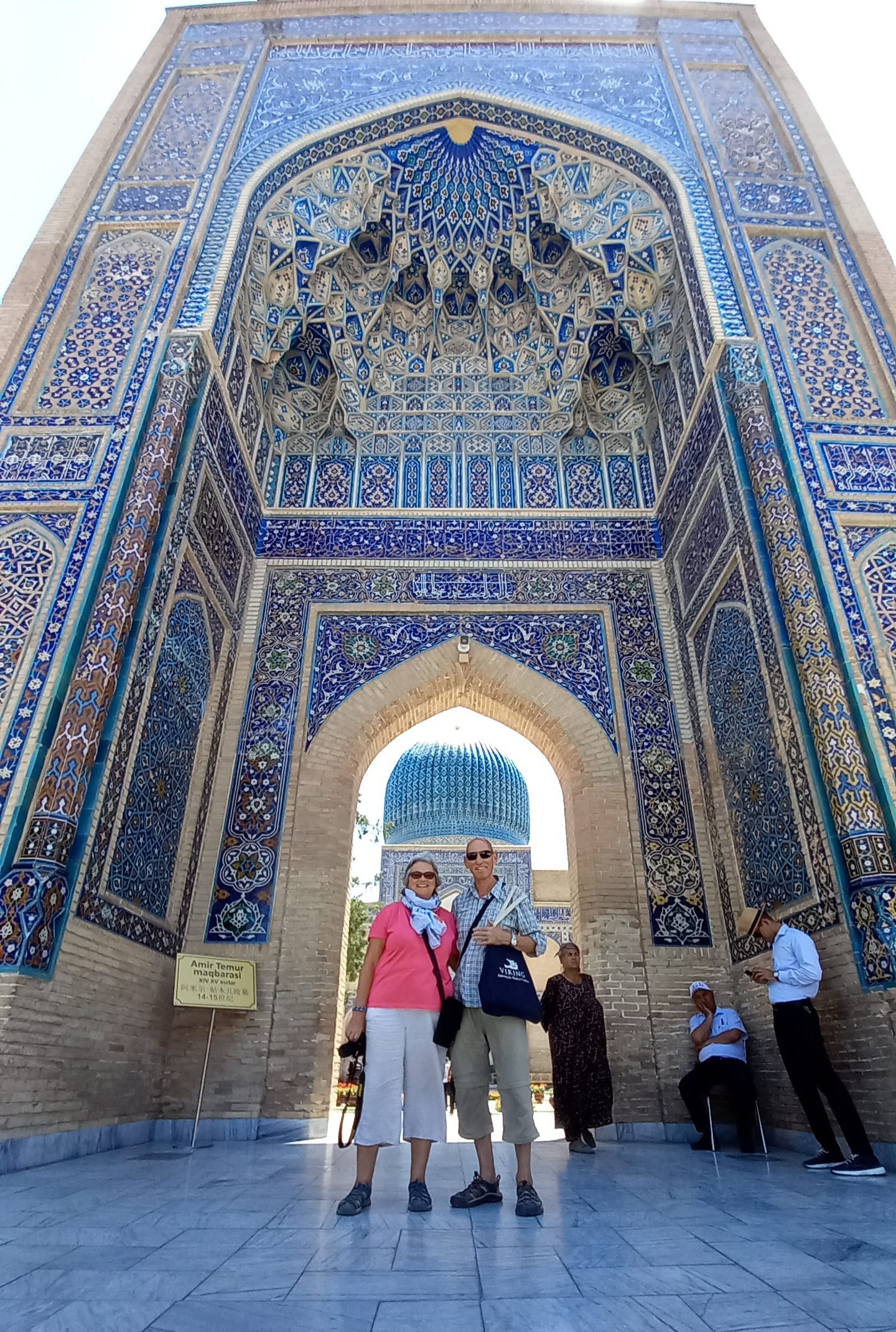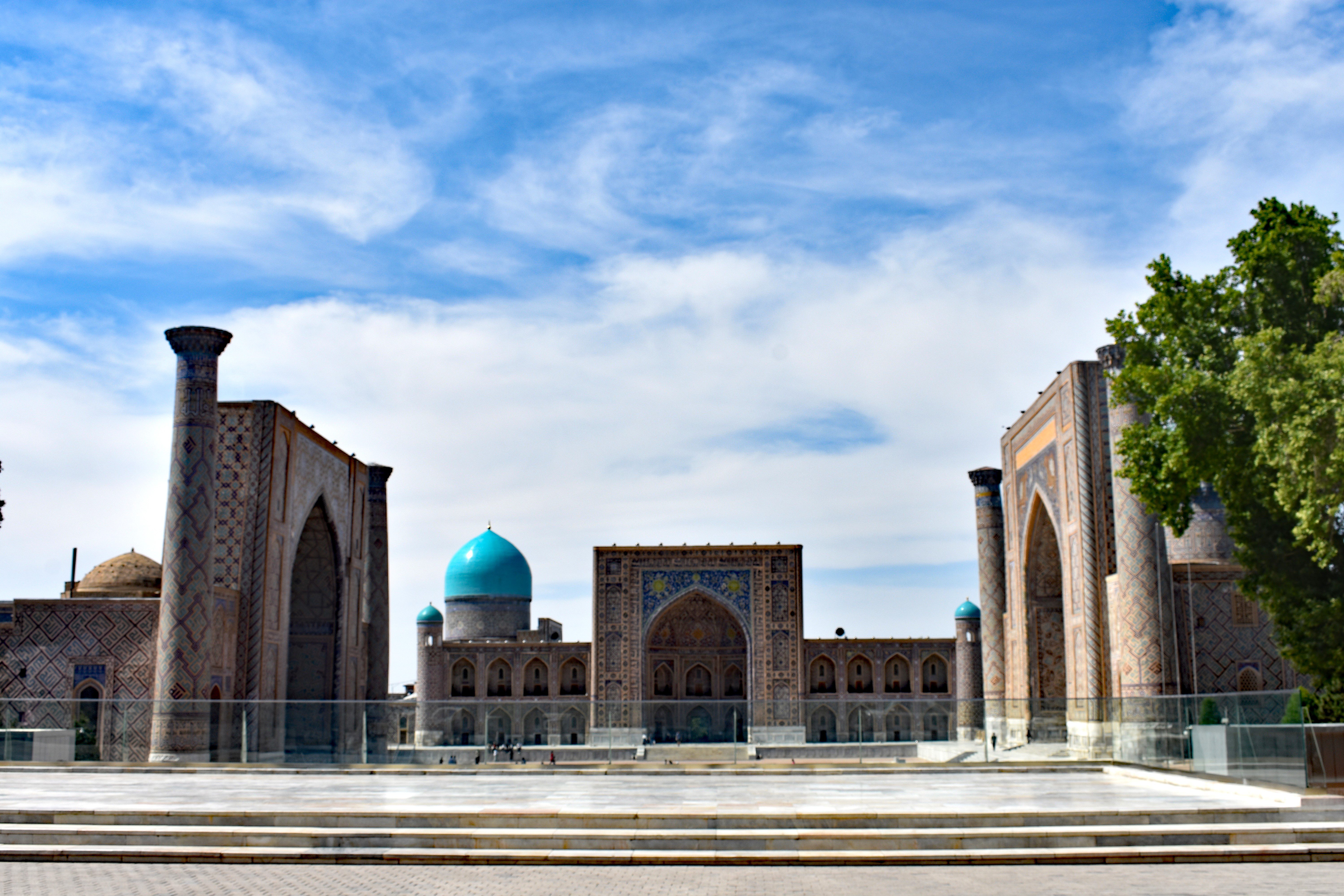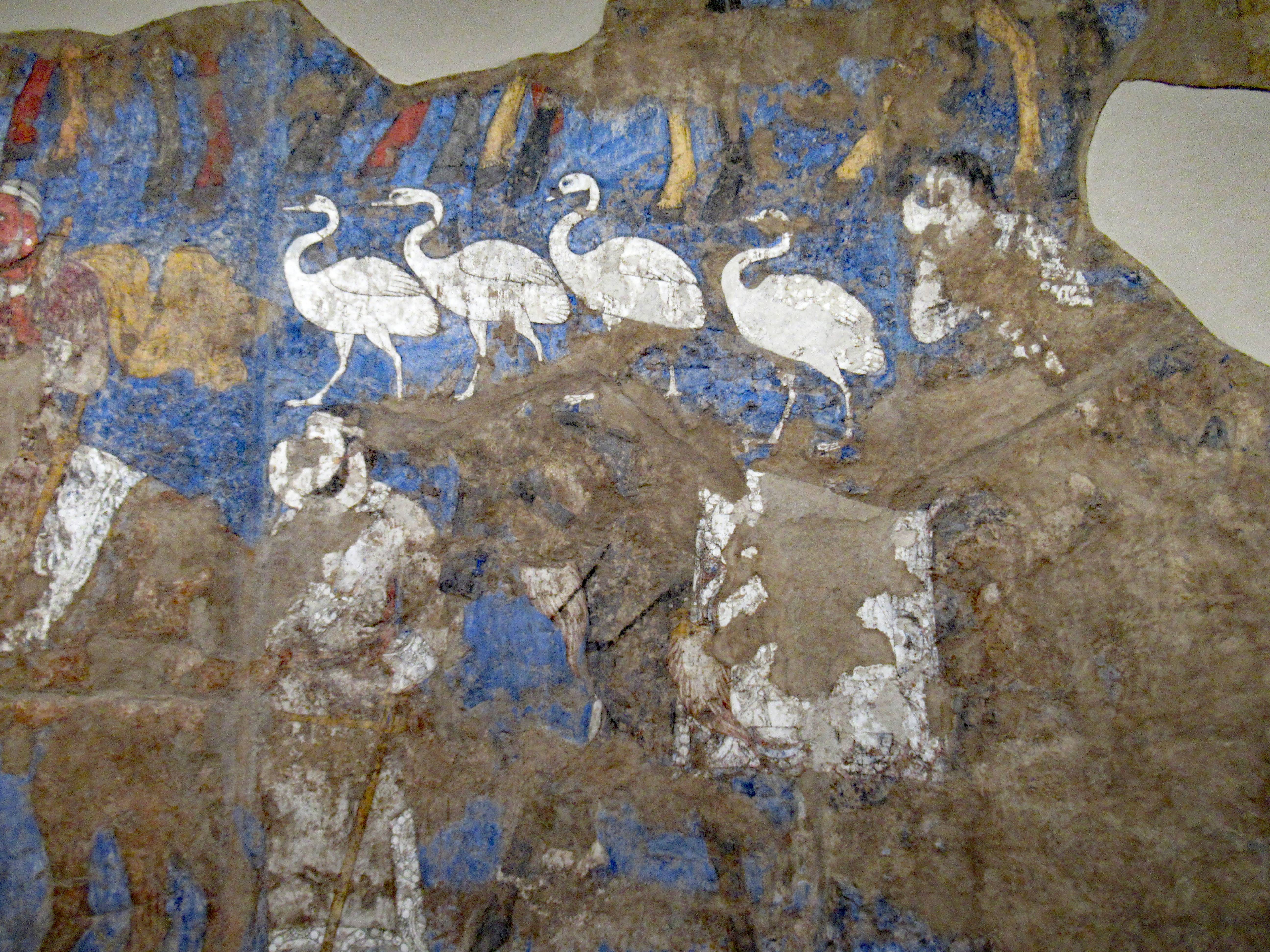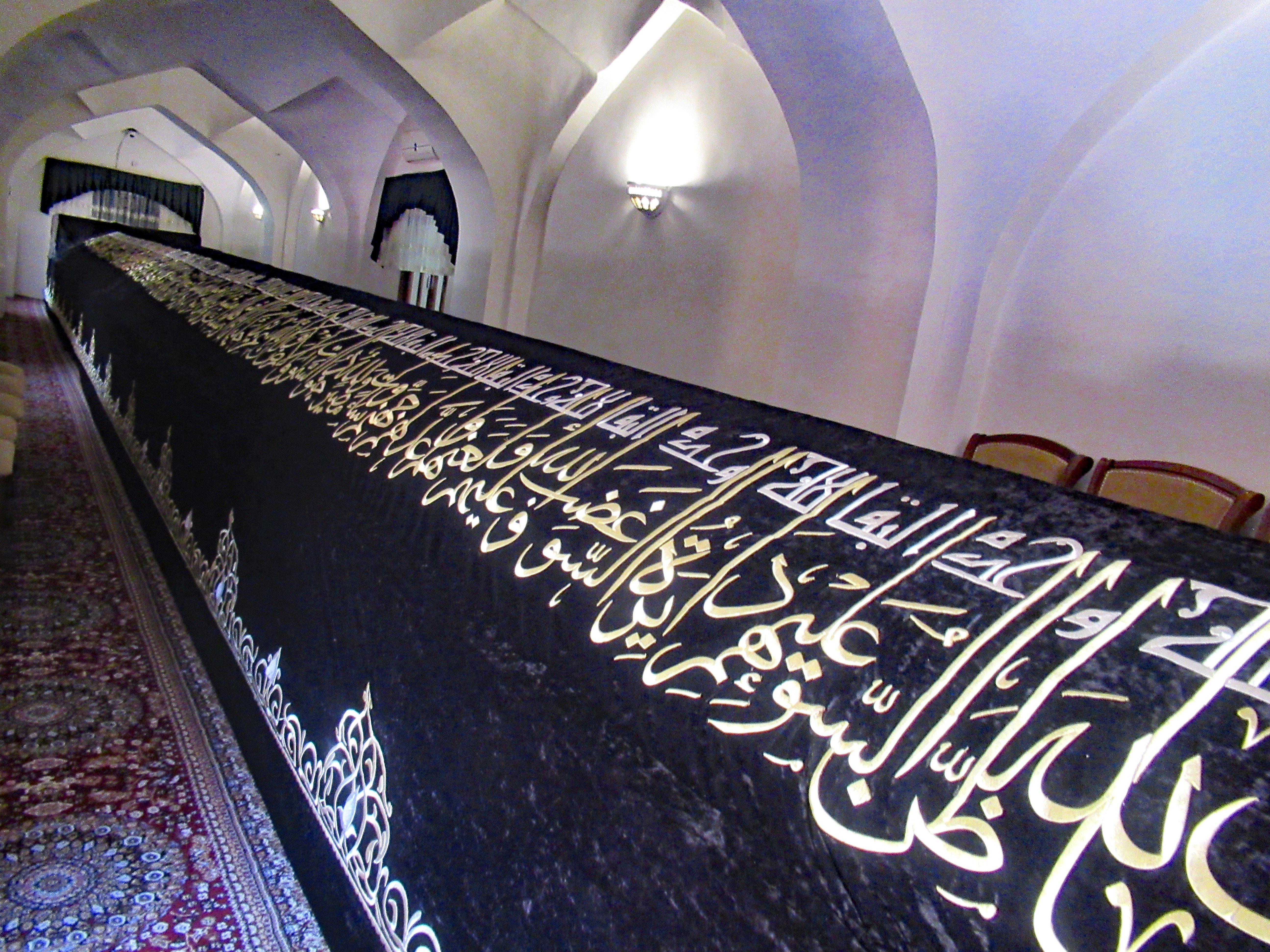Samarkand and the Silk Route are synonymous, and we spent three nights in the city to fully enjoy the sights.
We began at the Gur-e-Amir Mausoleum, and as it was only a short walk from our hotel, we visited again at night when it was fabulously floodlit. It marks the final resting place of Timur or Tamerlane, and his two sons and two grandsons. A stunning tiled portal and arch led through to a courtyard and a ribbed turquoise dome, and our guide carefully positioned us in front of the arch to get a photograph which included the dome behind. The highly decorative interior was equally beautiful. When the crypt was opened by a Soviet anthropologist in 1941, he found an inscription on Timur’s grave translated as ‘whoever opens this will be defeated by an enemy more fearsome than I’. The next day, 22 June, Hitler attacked the Soviet Union.
The equally impressive Registan Square had two identical madrassas on either side of a mosque, and we climbed to the first floor on the left-hand side madrassa for views. Most of the rooms now housed souvenir shops selling a wide variety of goods.
The walk from Registan Square to the Bibi Hanim Mosque was around 1km and as it was incredibly hot, we hired a golf buggy. It was built to honour Timur’s favourite wife, and we heard a long and complicated story about how the master builder tried to seduce Mrs Timur, whilst her husband was away on a campaign, with coloured eggs, a love bite and wine all playing a part. A giant marble Quran stand in the central courtyard, was said to miraculously aid women in becoming pregnant if they crawled underneath it. However, in 2023 a glass case was erected around the structure for protection or possibly to prevent population explosions.
Afrosiab was once located in the heart of ancient Samarkand, and the Afrosiab Museum was dedicated to the city’s history. It had only recently reopened following a two-year renovation led by Korea and the South Korean President was visiting the following day. A 10-minute video explained the subject matter of the Afrosiab murals discovered in 1965 during a road construction scheme. We then saw the actual murals as well as coins, pottery, jewellery and skulls which had been bound to elongate their shape.
At the Tomb of Daniel, we found a blue dome and a spring. Having bought paper cups, we tasted the slightly soft water which locals were filling huge bottles with. After stories about how Daniel won favour by interpreting dreams and avoiding death by the lion and by fire, we hiked up 50 steps to the actual tomb, 18m long and covered with a black cloth with gold Arabic writing. There are various legends about the grave’s length, including the fact that the holy relics increase from year to year, and that it is more difficult to find the location of the remains and steal them. Next to the mausoleum was a 600-year-old pistachio tree which had dried up, until in 1996 the former head of the Russian Orthodox Church, prayed inside the mausoleum and sprinkled holy water over the tree. A short time later, the tree blossomed again in its old splendour. We were invited to touch the tree and make a wish.
For me, the most memorable site was Shah-i-Zinda. A flight of 40 very steep steps took us up the avenue lined with mausoleums all belonging to ladies. Some were incredibly ornate with tiles and paintings, but others, with the bodies of unknown people, were left completely plain. At the end, we passed through a beautifully carved wooden door and a second small door into a room where an Iman was reciting the Quran. People sat around listening and praying and when he had finished, they gave him money. As we left, carpets were being unrolled which would be placed on the path and stairs ready for Friday prayers.
Ulugbek, the grandson of Timur, was interested in astronomy-related mathematics from a young age and having passed a large statue of him, a long flight of steps took us to the site of his observatory. Ulugbek also wanted equality for women, which caused the imam’s to uprise, and he was beheaded. Everything in the observatory was said to have been destroyed, although some artefacts have surfaced in museums around the world. At the remains of the observatory, we peered in to see a track where the sunlight came in, which was used to measure angles and degrees of the movement of the planet and stars. We had to visit the small accompanying museum in the dark as they were testing the electricity for the presidential visit. However, we managed to see some of the books, catalogues, models of how the observatory would have looked and how far Ulugbek’s calculations about the tilt of the earth etc were out, bearing in mind his limited tools.
For something completely different, our final stop was at the touristic Koni Gil village with several craft areas and a restaurant. As well as seeing the production of flax oil, we visited the Meros Paper Mill where we were shown the several processes beginning with the soaking and scraping of tree bark through to the pressing, drying and smoothing of the paper with a stone. The gift shop had all manner of products made from the paper including clothes and bags, but as expected, it was expensive, with an egg-sized Christmas tree decoration priced at 20,000 Tenge (or just over £30). Needless to say, we did not purchase.
Whilst the South Korean president was visiting, we visited the nearby town of Shakhrisabz (see separate review).












